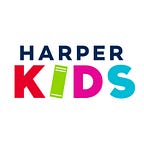How Being a Teacher Helps Me Write Books for Kids
by J.A. White
I have two jobs. The first is plunging make-believe children into hazardous situations with little hope of escape. The second is teaching real children, who will hopefully never face the horrors that befall my fictional creations (outside of standardized exams). It’s certainly not unusual for educators to become children’s authors, but it’s interesting to think about the specific ways that hanging out with kids all day makes me a better kid-lit writer.
First, some background. I’ve taught at the same New Jersey public school for the past 18 years. I jump around a lot, mostly to keep things fresh; at one point or another, I’ve been a classroom teacher for 3rd, 4th, 5th, and 6th grade students. This coming year, I’ve been given the opportunity to do something different and teach all the 3rd through 5th graders at my school a weekly writing lesson, along with an enrichment component for gifted writers.
Also, I write books. They include The Thickety series and Nightbooks, all published by Katherine Tegen Books. Usually I write in the morning, before the school day begins. I’m honestly too tired for the kind of higher-level thinking that writing requires by the time I get home; teaching is rewarding and exciting and a whole lot of fun, but it’s also exhausting. My day is fueled by an ocean of coffee.
One of the questions I get asked most often is whether any of my characters are based on former students. The short answer is no, but I suspect it’s more complicated than that. Being around children every day allows me to immerse myself in their world — which is very different than the adult one. For example, problems that might seem unimportant to grown-ups could be absolutely devastating to children: a quarrel with a friend, a lost trinket, a bad morning at home. As a kid-lit writer, it’s crucial to leave my adult preconceptions behind and see the world through the eyes of a child — which is, fortunately, also necessary to be a good teacher.
Come to think of it, there are other ways that writing and teaching are complementary skills. Good teaching requires both creativity and a willingness to improvise when things aren’t working out — just like writing. In addition, you need to be structured and follow a strict schedule — which is also a necessary component to being an author. I think utilizing these skills throughout the school day actually keeps me sharp when I sit down to write. I’m in a constant state of creativity/improvisation/structure.
On a more concrete level, teaching reading and writing “forces” me to look at kid-lit through the eyes of an educator, searching for ways that I can utilize novels, essays, and stories as model texts in the classroom. In the past, I’ve created lessons from the work of such masterful authors as Kate DiCamillo, John Bellairs, Katherine Applegate, Pam Munoz Ryan, Andrew Clements, and Lois Lowry, just to name a few. As I prepare these lessons for my students, I can’t help but also study these works as an author, wondering how I can improve my own novels. In this way, my students aren’t the only ones who are learning.
Finally, my students help me keep a healthy grasp on what they expect from a novel — which is a good story and nothing more. When I’m on my third day trying to figure out if I put a comma in the right place, it can be comforting to know that children…don’t…care! They just want a book that they can disappear into and characters they love. Every author wants his or her book to be absolutely perfect, but this can also become an anchor and/or an excuse to procrastinate from moving onto the next project. When I get to that stage, my students help me chill.
My latest novel, Nightbooks, actually has a more direct link to my teaching career. It’s about a boy named Alex who gets kidnapped by a witch and is forced to entertain her with a new scary story each night in order to stay alive. Nightbooks is as much about the act of writing as it is about Alex’s attempt to escape. In this case, I was able to teach through my writing, and after all these years it was gratifying to have my two worlds come together as one.
About the author:
J. A. White is the author of The Thickety: A Path Begins. He lives in New Jersey with his wife, three sons, and a hamster named Ophelia that doesn’t like him very much. When he’s not making up stories, he teaches a bunch of kids how to make up stories (along with math and science and other important stuff). He wishes dragons were real because it would be a much cooler way to get to work.
